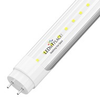For centuries people have used different methods to light up their streets and outdoor areas. Ranging from gas to oil, different kind of fuels have been used to lights up those dark streets
But what is it that makes lighting up the streets such an important task? After the sun sets, in the dark of the night crime becomes a problem and one significant deterrent to this menace has been street lights. Which not only serve as a lighthouse to all those wanderers of night, but also gives a sense of security and respite.
With the advent of technology, humans have progressed a lot, coming all the way from lanterns hung on poles to LED Pole lights. Before we dive into the world of LED pole lights lets have a glimpse at the history of pole lights and how the advancement came to be.
A Brief History of Pole Lights
Pole lights are not a new phenomenon, as early as in 500 BC, it is documented that, natural gas from volcano gas leaks was used to light up the streets of Pecking.

Vegetable oil was used in oil lamps in Ancient Rome during night time which people used to hang in front of their houses. Special servants were employed only to maintain the lamps. This was the importance of these ‘street lamps’.
It was in 1417 that a first public attempt was made to light up the streets of London. The then Mayor, Sir Henry Barton ordered that in winter months all houses must hang lanterns outside their house. In 1524 all the house which had street-facing windows were asked to hang lanterns by order in Paris.
Coal gas was used as fuel for the first time in 1802 when William Murdock lit the outside of Soho Foundry in a public presentation using coal gas. In 1807 London followed suit and in 1816 Baltimore became the first US city to use gas.
It was in the year 1878 that the first electric street lights were used in the streets of Paris. By 1881 some 4000 of those were in use. By the year 1890 more than 130,000 electric street lights were in use all across Europe and the US. These electric street lights were using Arc light which because of its many shortcomings was soon replaced with incandescent bulbs.
Advantages Of LED Pole Lights
LED Pole light or yard lights offer many advantages over metal halide or high-pressure sodium lamps. Some of these advantages are listed below:

Energy-efficient: LED Pole lights are highly energy-efficient as they convert 95% of the energy consumed into light and only 5% of the electricity is wasted as heat. This means that these save a lot on electricity and reduce your electricity bills by up to 75%. A 300 watt LED pole lights have the capacity to replace a 1000 watt metal halide fixture.
This also means that these LED pole lights are good for the environment because these demand less electricity from the grid, therefore, reducing the carbon footprint of the planet.

Long-lasting: Because of their unmatched efficiency and no residue functioning, LED pole lights last much longer than traditional pole lights. LED pole lights have been tested to run for a minimum of 50,000 hours. This means that once you install these pole lights you can be assured for a minimum of 5.7 years that your pole light will not betray you.

High CRI: These LED Yard lights have a high Color rendering index which measures the color rendering capabilities of the given light. CRI is measured in comparison to an ideal light source such as the daylight. LED pole lights have a high CRI of more than 80 which means that the colors rendered under these lights are 80% accurate when compared to daylight.

IP65 rated: Having an ingress protection rating of 65, these LED pole lights are weatherproof and can easily withstand rain, moisture and dust.

Dusk to Dawn: Having a photocell, these Pole Lights are dusk to dawn. This means that these LED Pole lights operate automatically and need no manual intervention. The light on its own turns own at dusk with the dimming of sunlight at sunset and automatically turns off with sunrise.

High beam angle: LED Pole lights have a high beam angle thus these cover a large area and the requirement for the number of pole lights to cover a specific area also reduces because of this.
No maintenance: LED Pole light come with such a long life, have a rugged build and is a champion in heat dissipation, therefore, the life of these products is high and requires no maintenance during the course of their lives.
Types Of Mounting Options Available For LED Pole Lights

Direct mount: Direct mount is in which the pole light is directly slipped on to the pole. This type of mount leaves no scope for adjustment.
Slip fitter/Yoke/Adjustable: Adjustable mount, also known as slip fitter or yoke mount, is the mount which provides for an adjustment of 90 or 45 degrees according to the need.
Universal mount: This is most versatile of all mounts and can be installed on any mount. This type of mount can be adjusted to any angle and can be installed on any other mount.
From Lanterns to LED Pole lights, humans have come a long way and the way we light up our street has drastically changed, but the purpose for the same has remained constant. Safety and security have forever been the prime reasons for humans to use street lights apart from lighting up the dark corners.
In the future as well the reasons why we use pole light will remain the same no matter the technology, the age or the era, humans will always strive to find a cost-effective and efficient way to light up our street. LED Street lights have for now taken a stronghold over the market because of their cost-effectiveness and eco-friendly operations.




















































































